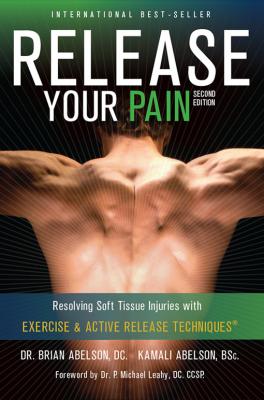ТОП просматриваемых книг сайта:
Release Your Pain: 2nd Edition - EBOOK. Dr. Brian James Abelson DC.
Читать онлайн.Название Release Your Pain: 2nd Edition - EBOOK
Год выпуска 0
isbn 9780987866219
Автор произведения Dr. Brian James Abelson DC.
Жанр Здоровье
Серия Release Your Body
Издательство Ingram
As staggering as these statistics are, the National Institute for Occupational Safety and Health (NIOSH) and a University of California study concluded that they likely understated the actual number of cases. They cite that only 44% of work-related injuries are actually reported and the incidence rate may be 130% higher. 5
Look at these Statistics!
In 1981 (when the IBM PC was first released) only 18% of all illnesses reported were RSIs.
In 1984, RSI cases grew to 28% of all occupational illnesses.
In 1992, RSI cases grew to 52% of all occupational illnesses.
In 2000, 70% of all occupational illnesses reported were expected to be due to RSI.
RSI cases account for one out of every three dollars spent for workers’ compensation.
The average cost of traditional or conventional treatments and disability payments for one injured worker is over $40,000.
This rapid increase in repetitive strain injuries coincides with the increase in the use of personal computers.
Finding a Viable Solution for RSI
Repetitive strain injuries cause major problems for both the person suffering from the injury and for the employer who is trying to minimize company health care expenses. Because of their complexity and multi-factorial nature, soft-tissue injuries (such as RSIs) require extremely specific and individualized solutions. Until now this has been a very difficult objective to achieve.
In my opinion (based on both my own clinical experience and upon the amazing results that ART has achieved after implementing treatment programs at several major corporations in the United States) Active Release Techniques provides just such a solution.
In 2003, Active Release Techniques began delivering on-site care to corporations that were experiencing significant expenses caused by repetitive strain injuries. ART practitioners were brought on location and treatment was initiated to treat and prevent soft-tissue conditions (such as RSIs) from developing. A key point is that ART was not just used to treat injuries, but used on-site to prevent them from occurring.
On-site treatments started with an initial pilot program at Sanmina-SCI, a corporation with 1,100 employees in Fountain, Colorado. The Workers’ Compensation costs at this facility were approximately $1 million per year and most of these costs were primarily attributed to soft-tissue injuries. Twice a week, ART practitioners conducted hour-long sessions with affected employees.
The results were astounding! After just one year of ART treatments, soft-tissue injuries were reduced by 80%. In addition, 90% of the RSI injuries that did develop could now be treated on-site. Also remarkable is that this corporation has been able to keep their soft-tissue injury costs down to this level for the last three years.
Over the last eight years, these significant results have been repeated again and again at a variety of different corporations. At the present time, ART is achieving similar results by working with over 150 corporations in the United States. If you would like more information about ART Corporate Solutions – On-Site Care, then visit their web site at www.artcorpsolutions.com.
_______________________
1. U.S. Department of Labor, Bureau of Labor Statistics, Days away from work highest for Carpal Tunnel syndrome, April 02, 2001, http://www.bls.gov/opub/ted/2001/apr/wk1/art01.htm
2. U.S. Department of Labor, Bureau of Labor Statistics, Days away from work highest for Carpal Tunnel syndrome, April 02, 2001, http://www.bls.gov/opub/ted/2001/apr/wk1/art01.htm
3. U.S. Department of Labor, Bureau of Labor Statistics, Days away from work highest for Carpal Tunnel syndrome, April 02, 2001, http://www.bls.gov/opub/ted/2001/apr/wk1/art01.htm
4. U.S. Department of Labor - Occupational Safety & Health Administration, http://www.osha.gov
5. NIOSH - National Institute for Occupational Safety and Health. http://www.cdc.gov/niosh/topics/ergonomics
About Active Release Techniques (ART)
Chapter
4
The Research behind Active Release Techniques
Who Can Provide ART Treatments?
How does an ART Treatment Feel?
Improving Athletic Performance
Conditions That Can Be Helped with ART
“ART is a patented, advanced, movement-based massage system, which is extremely effective for accurately locating the cause of soft-tissue conditions and effectively resolving (or greatly improving) overuse and strain/sprain conditions.”
The definition of Active Release Techniques®(ART®) has changed and expanded over time as ART evolved. Essentially, ART is a non-invasive, hands-on, soft-tissue technique that simultaneously locates and breaks up scar tissue (which is the primary cause of pain, stiffness, weakness, numbness, and physical dysfunctions that are typically associated with soft-tissue injuries). ART combines motions performed by the patient with a hands-on technique that releases the adhesions between tissue layers. This process restores mobility and relative motion to the soft-tissue layers, increases circulatory function, and increases neurological function by breaking and releasing restrictive adhesions.
Active Release Techniques (ART) is classified as a multi-disciplinary procedure that is practiced by numerous practitioners from a wide range of medical professions and disciplines, including Chiropractors, Physiotherapists, Massage Therapists, Kinesiologists, Occupational Therapists, and Sports Physicians.
What is ART?
Active Release Techniques is a combination of both ART (pun intended) and science. In my opinion, ART

